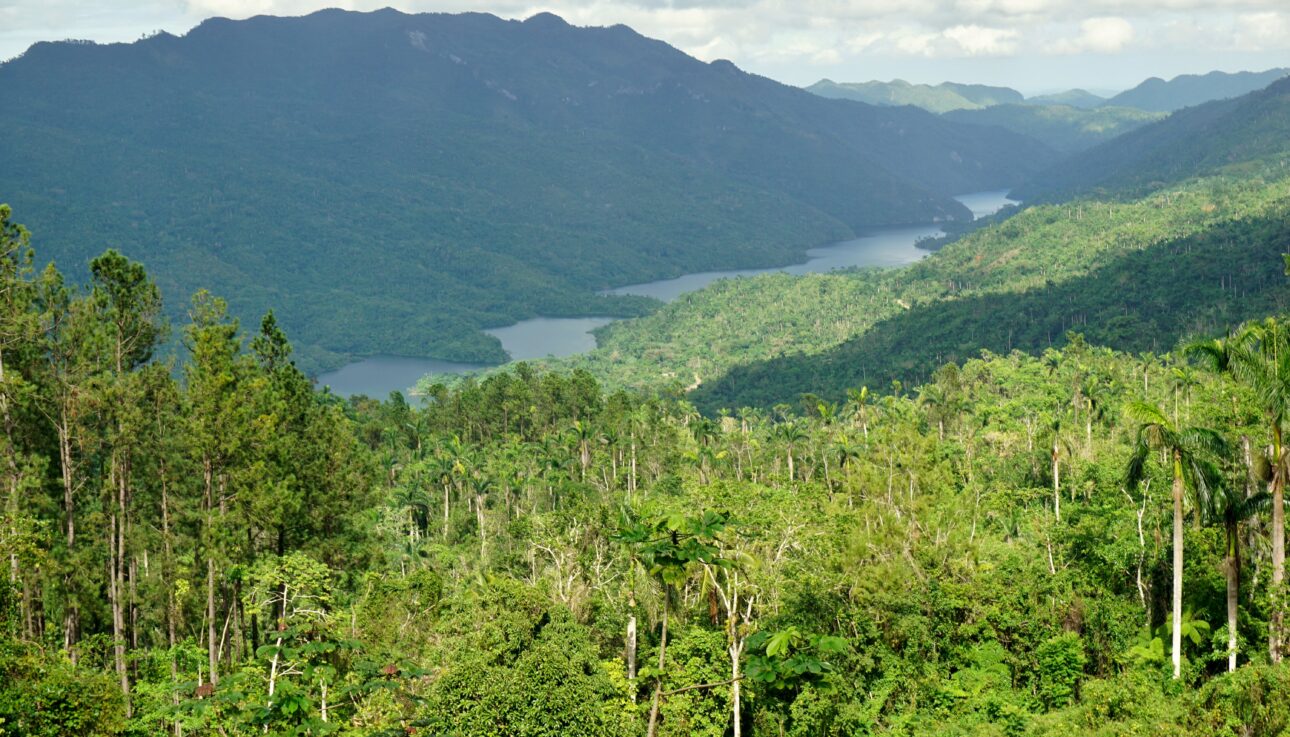When I travel, I like to do more than just see the landscapes and enjoy what a country has to offer. I like to get an authentic feel for the culture, by getting in contact with the locals and asking how the local life is. Sometimes, that is possible with certain excursions. Immersing yourself in a new culture provides a learning experience like no other, where not all classrooms have 4 walls and a textbook is not the only way to learn things. In the end, travel provides you with the motivation to continue learning.
I have traveled to Cuba 5 times so far, and always stayed at the resorts. Well, let’s get into the “real Cuba”. Here are the things that I have learned about this beautiful island:
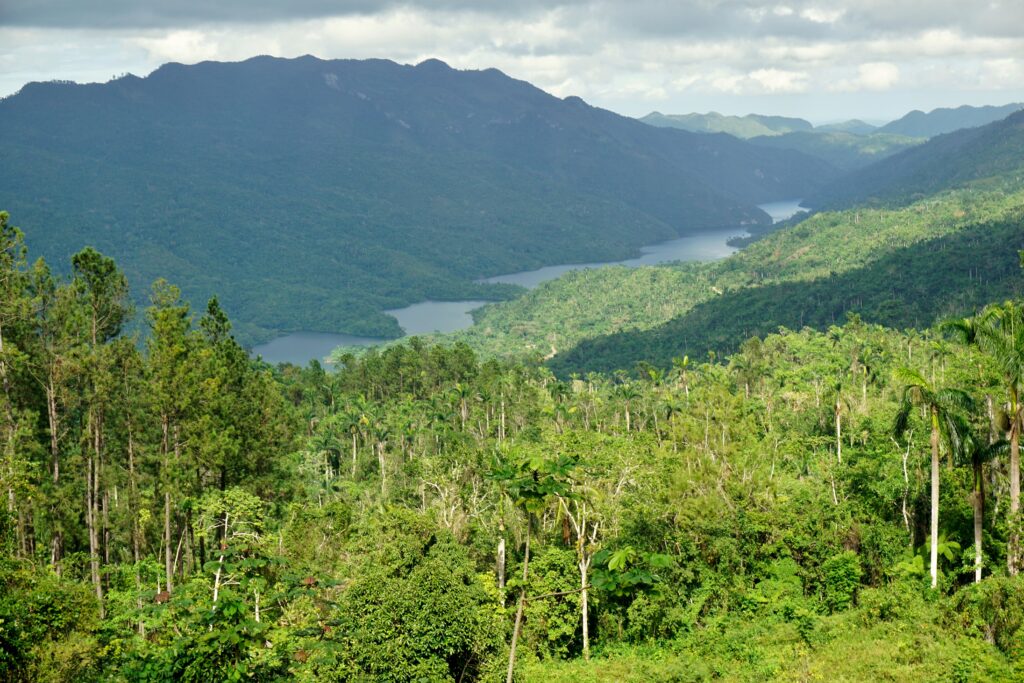
Population
In addition to an abundance of natural attractions, Cuba offers the customs and easy going lifestyle of cheerful and hard working people whose doors are always open to neighbors, friends and visitors. Cubans will always greet you with a smile. The Cuban population is currently estimated at more than 11,000,000, with 75% of the population concentrated in urban areas. Havana alone is home to 2.2 million residents, which represents one fifth of the total population.
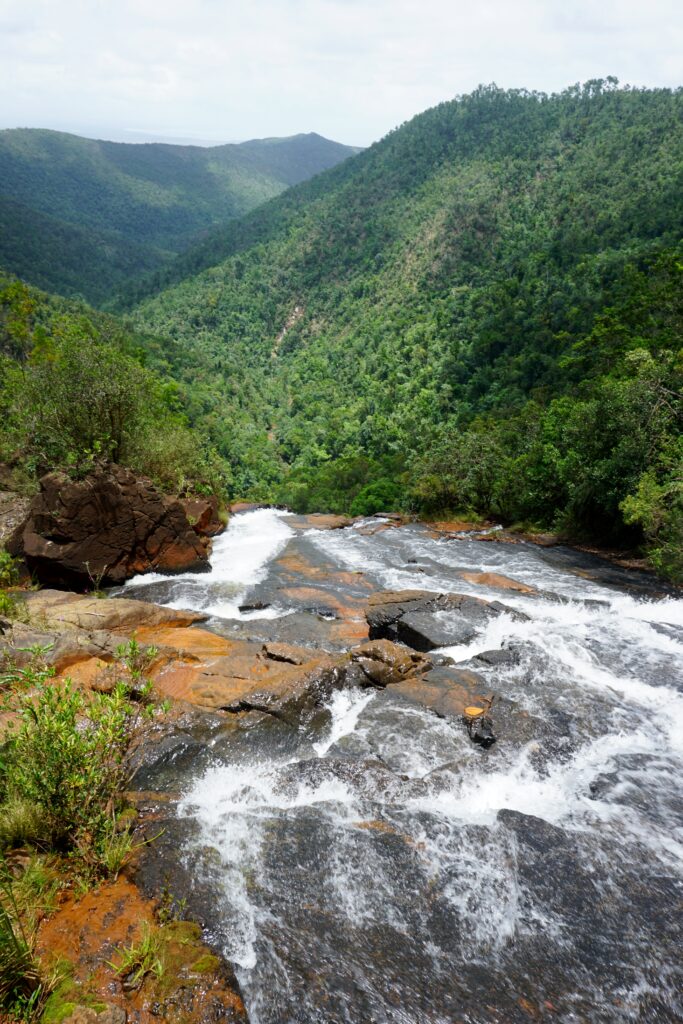
Health
Health is free nationwide. The only thing you pay for is the medicine that you buy. But if you need to be in the hospital for whatever reason, all of that is completely free. And if the doctors in the hospital give the patients medicine while they’re in the hospital, it’s also free!
Education
Education, school supplies and textbooks are completely free to everyone from primary school to university. Even doing your Masters or PhD in Cuba is free. School is mandatory up to grade 9, after which it’s not mandatory to continue. Those who don’t want to continue studying after grade 9 could start a career if they’re lucky, otherwise they go to the army for 2 years. After that, they can choose to go to university if they want.
The Cuban Culture
Over the centuries, Cuban culture has developed its own spirit, inspired by both African and Spanish cultures. It has reached its apex in the 20th century with thriving local dance, fine arts, painting, literature and poetry.
Cuba is also well known for its music and cinema, and its home rhythms of the danzon, the bolero, the mambo, the rumba and the cha-cha-cha.
A wide range of cultural activities take place in Cuba. Literature, fine arts, music, cinema, ballet, modern dance and theatre have inspired many internationally renown artists.
In addition, Cuba hosts several major cultural events. Some of them include the Havana International Ballet Festival, the Havana Biennial, the Havana International Guitar Festival , and there are many more.
Religion
Cubans have complete freedom of religion, Catholicism being the most widespread. Religious celebrations take place every day in the many churches throughout the country: masses, baptisms, weddings, requiems, confessions, etc. Afro-Cuban religions (Santeira) which combine the worship of Yoruba deities with that of Catholic Saints, are rooted and widely practiced. Other denominations such as Baptists, Evangelists, Methodists and Adventists are also represented in the country.
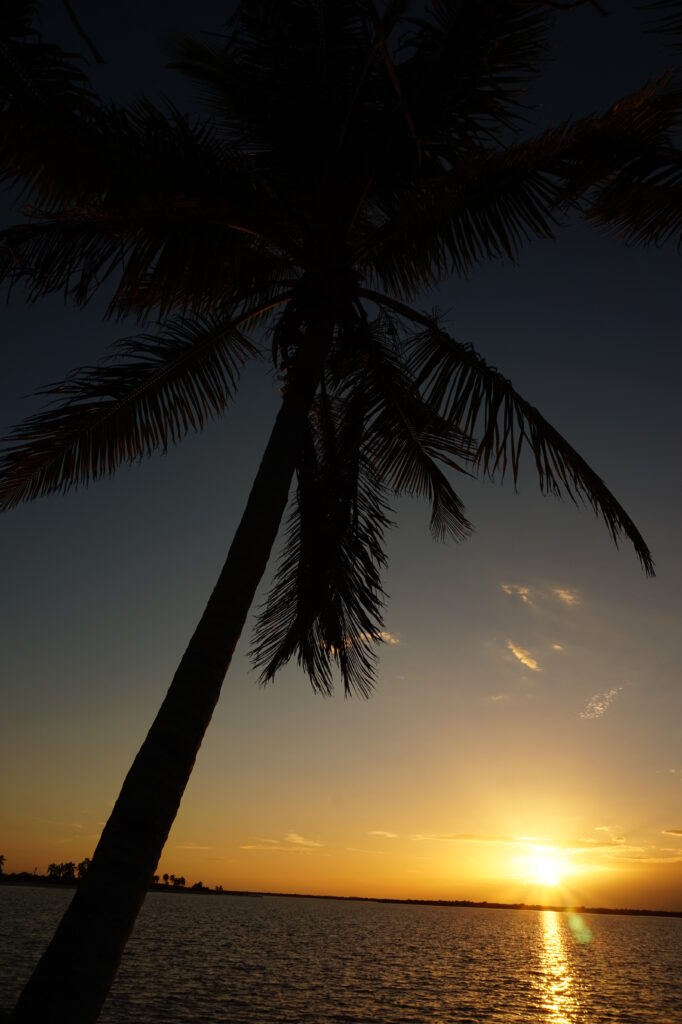
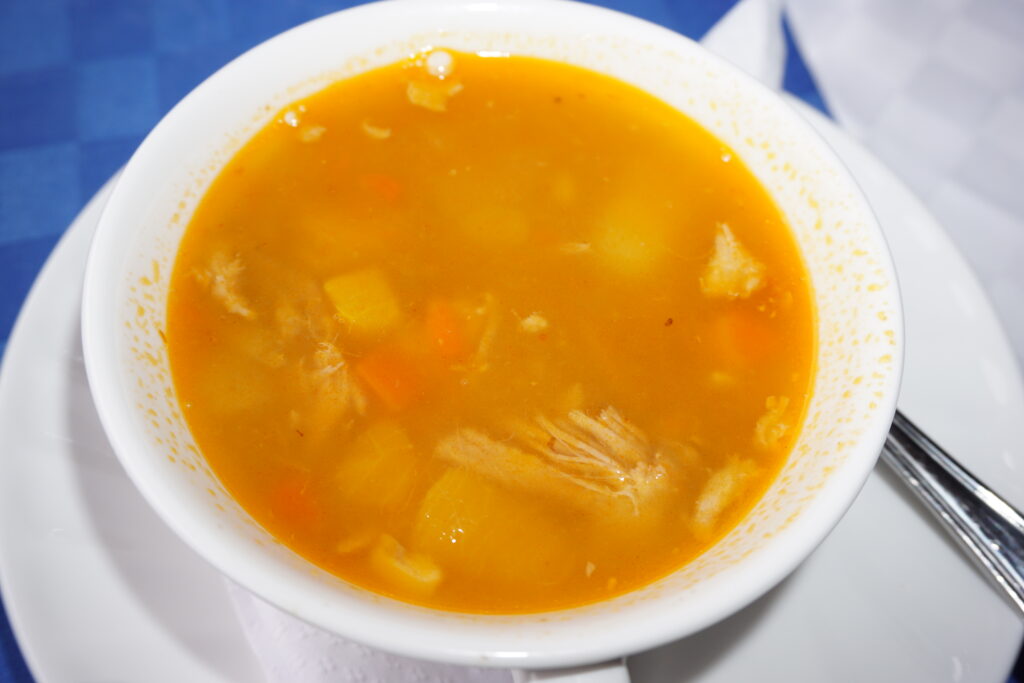
Cuban Cuisine
Cuban cuisine is influenced by Spanish, African, indigenous and other cultures. The national dish is ajiaco, which is a stew of assorted root vegetables, cooked with pork, poultry or beef. Other typical dishes worth trying include:
- Lechon (Roast pork)
- Fried Green Plantains (tachinos, chatinos or tostones)
- Black Beans
- Congri (rice with red beans)
- Moros and Cristianos (rice with black beans),
- Picadillo a la Habanera (ground beef in tomato sauce)
- Roast Chicken and Tamales
The National Flag of Cuba
The Cuban flag was first hoisted in Cardenas in 1850 by a group of rebels fighting against the Spanish Crown. The flag’s 3 blue stripes represent the areas into which the island was then divided. The 2 white stripes evoke the purity of the Cuban people’s ideals for their independence. The equilateral triangle represents freedom, equality and fraternity. The red of the triangle symbolizes the bloodshed in the fight for independence, while the single star is a symbol of absolute freedom and sovereignty.
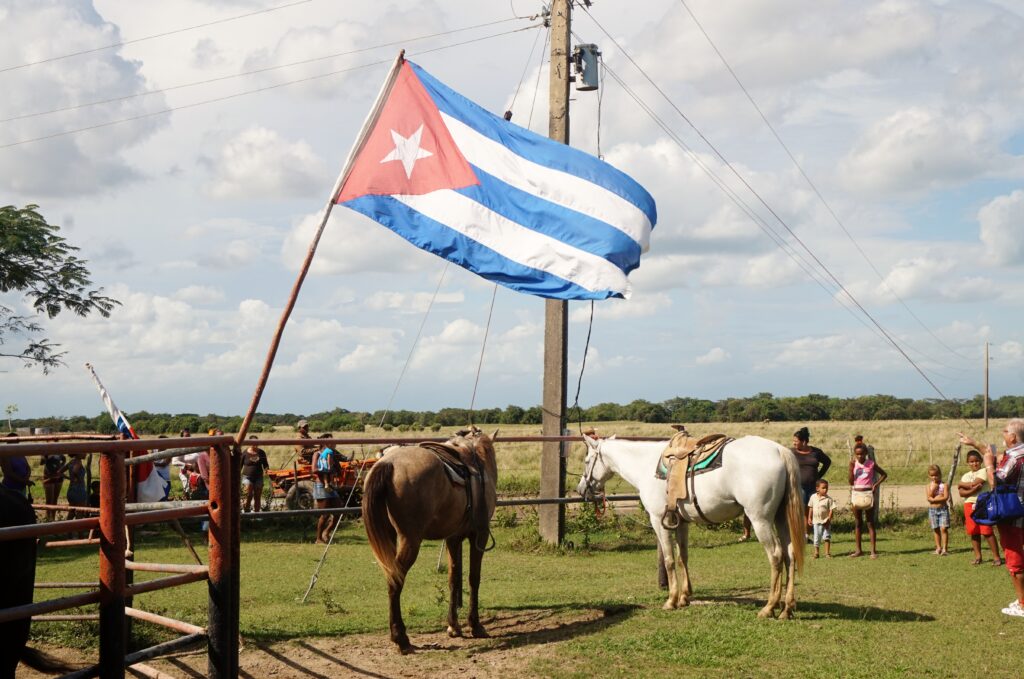
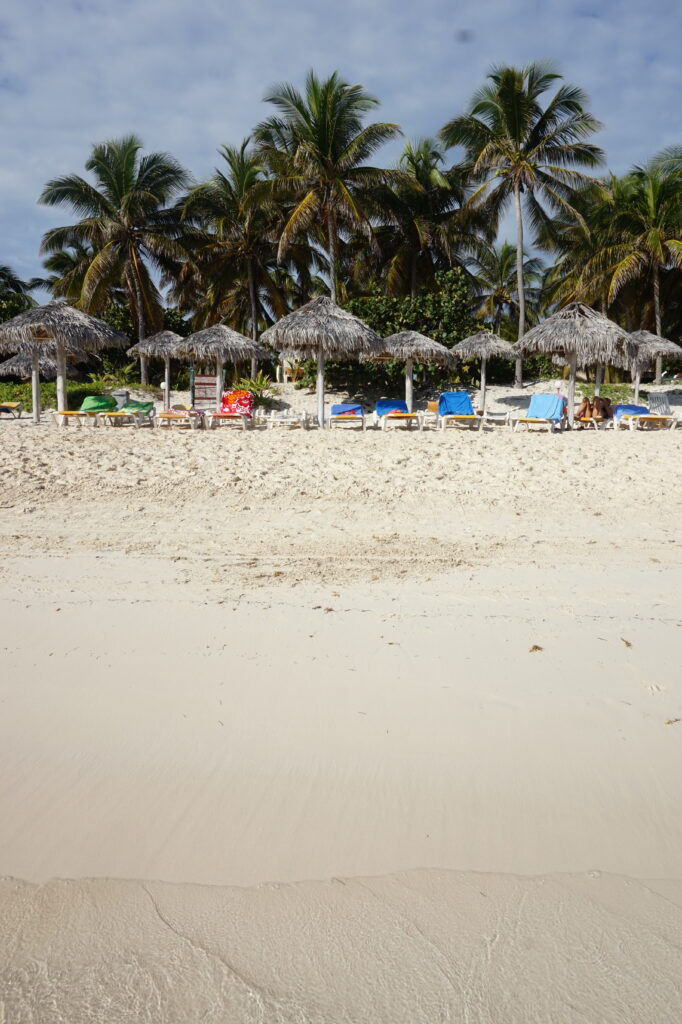
The Cuban Economy
Sugar cane and its related industries used to be the foundations of the Cuban economy, and are now lagging behind. Nowadays, tourism, nickel mining and export of professional services are taking over. The most important one is tourism: if the resorts would decline, or if airlines would stop flying to Cuba, the entire country would be devastated. This was demonstrated during the COVID-19 pandemic when the resorts closed, and airlines suddenly stopped flying there, for at least 6 months.
Minimum wage: 250 Cuban Pesos per month. That is equivalent to approximately $336 CAD.
Other important crops are tobacco, citrus, coffee, and tropical fruits.
The fishing industry is important as well. The Cuban fishing fleet piles all seas. Cuban seafood enjoys international prestige and fame.
Other basic revenues come from rum, bee honey, cocoa, as well as fireclay, manganese, asphalt, marble, cement, agaves, and its by-products, rayon and leather.
Biotechnology and the pharmaceutical industry have been highly developed in recent years. Cuba is also a leader in the research and development of “green” medicine.

